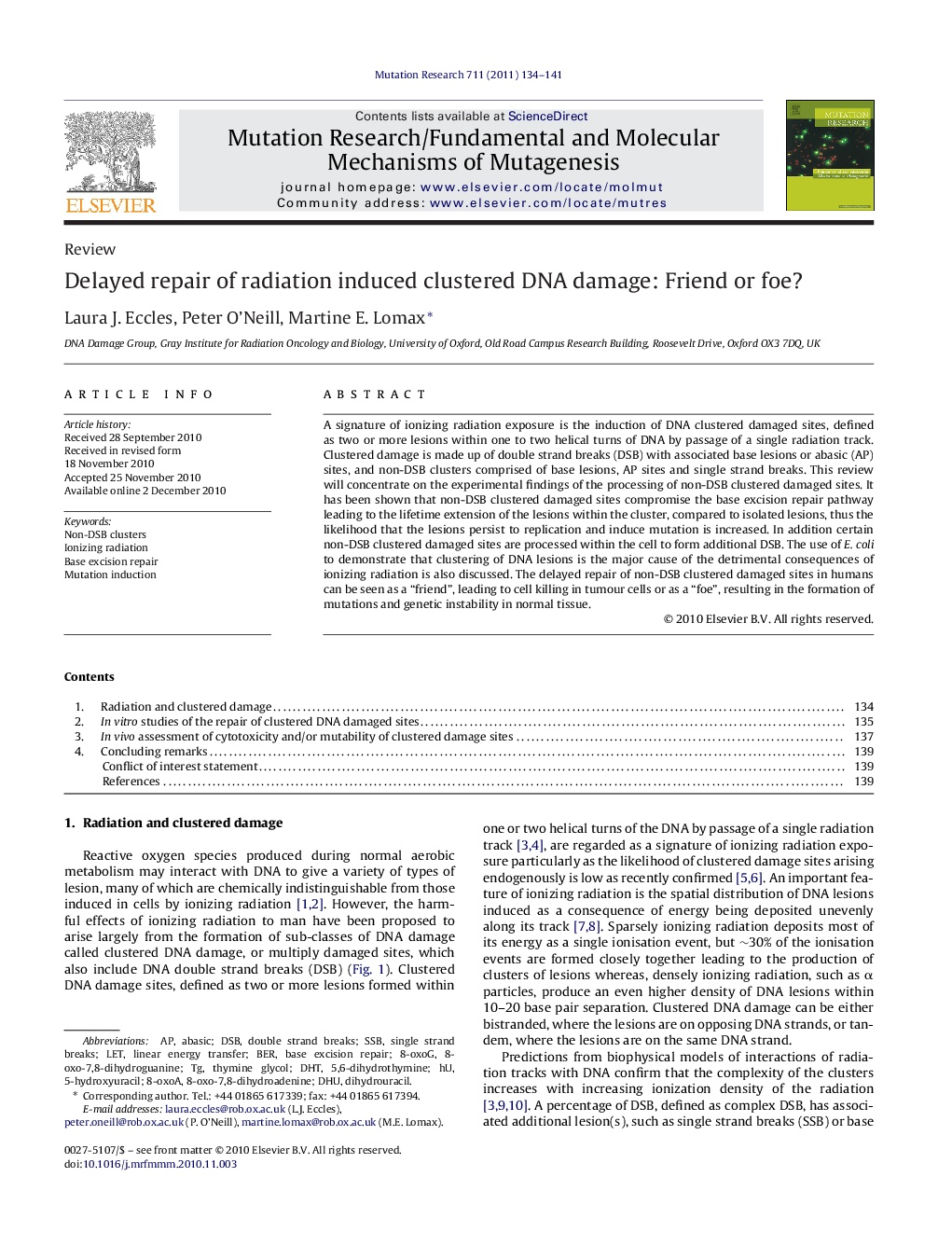| Article ID | Journal | Published Year | Pages | File Type |
|---|---|---|---|---|
| 8456017 | Mutation Research/Fundamental and Molecular Mechanisms of Mutagenesis | 2011 | 8 Pages |
Abstract
A signature of ionizing radiation exposure is the induction of DNA clustered damaged sites, defined as two or more lesions within one to two helical turns of DNA by passage of a single radiation track. Clustered damage is made up of double strand breaks (DSB) with associated base lesions or abasic (AP) sites, and non-DSB clusters comprised of base lesions, AP sites and single strand breaks. This review will concentrate on the experimental findings of the processing of non-DSB clustered damaged sites. It has been shown that non-DSB clustered damaged sites compromise the base excision repair pathway leading to the lifetime extension of the lesions within the cluster, compared to isolated lesions, thus the likelihood that the lesions persist to replication and induce mutation is increased. In addition certain non-DSB clustered damaged sites are processed within the cell to form additional DSB. The use of E. coli to demonstrate that clustering of DNA lesions is the major cause of the detrimental consequences of ionizing radiation is also discussed. The delayed repair of non-DSB clustered damaged sites in humans can be seen as a “friend”, leading to cell killing in tumour cells or as a “foe”, resulting in the formation of mutations and genetic instability in normal tissue.
Keywords
Related Topics
Life Sciences
Biochemistry, Genetics and Molecular Biology
Cancer Research
Authors
Laura J. Eccles, Peter O'Neill, Martine E. Lomax,
